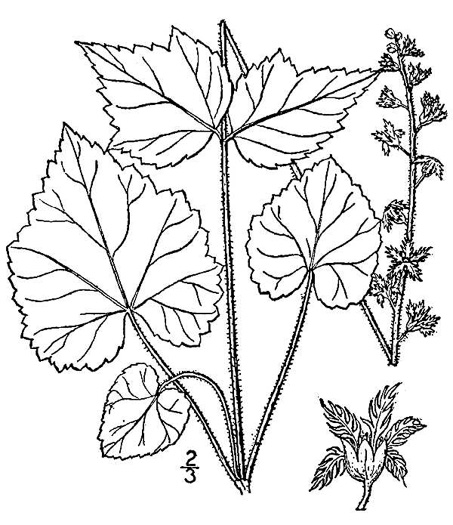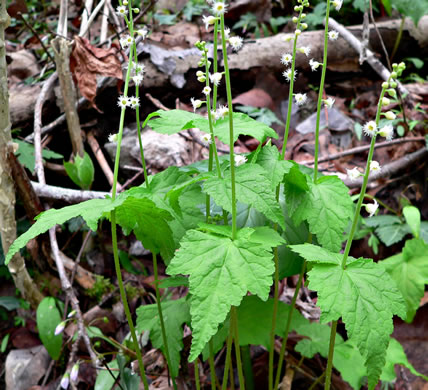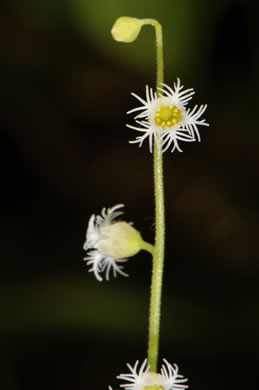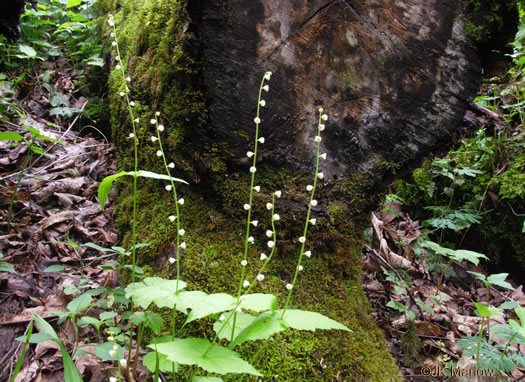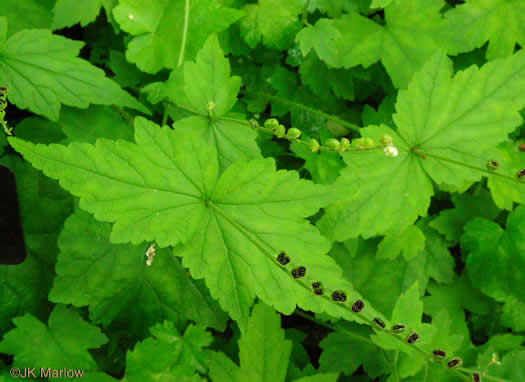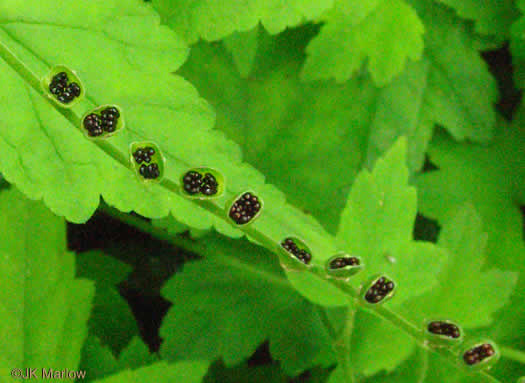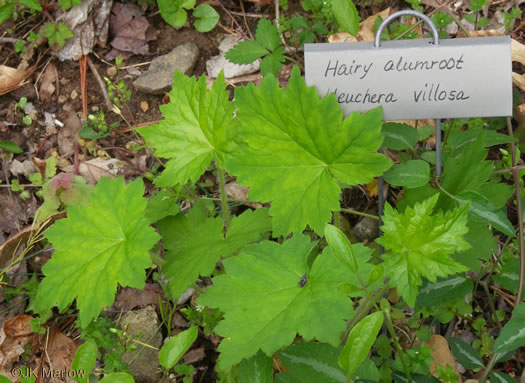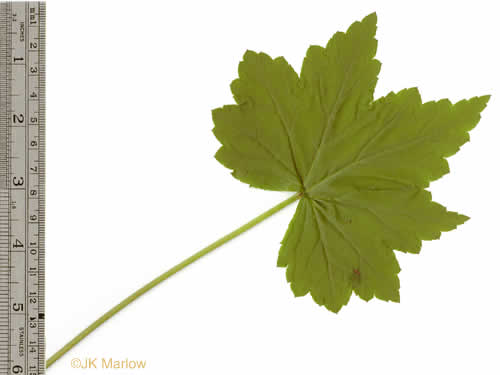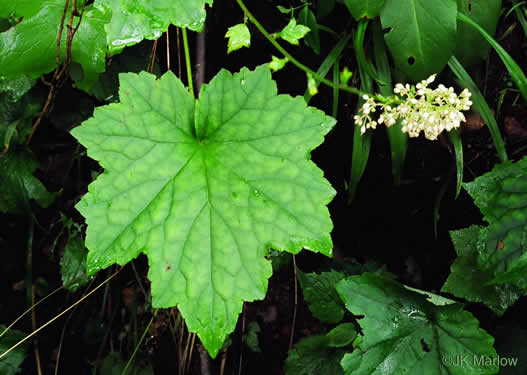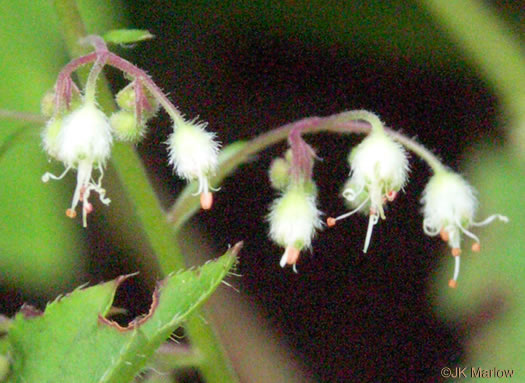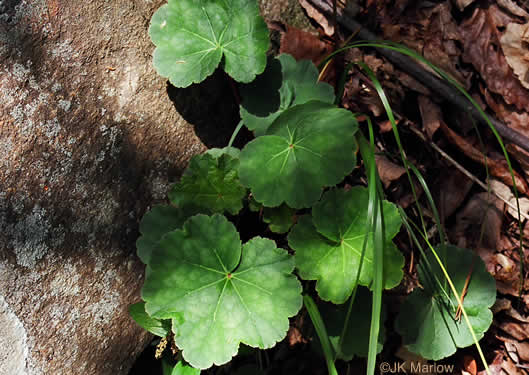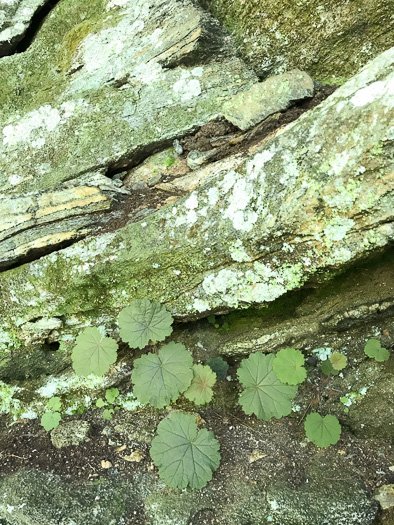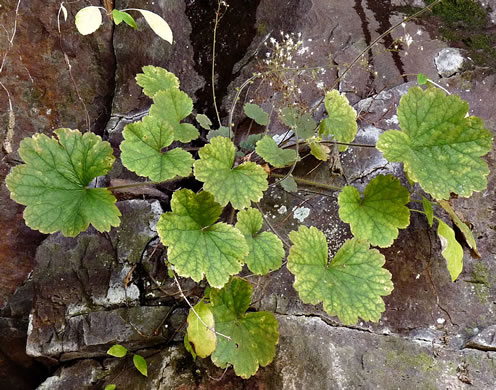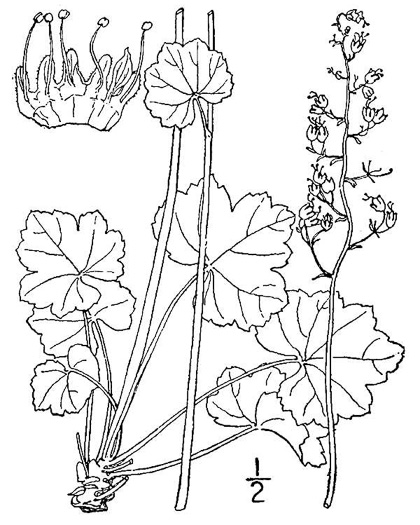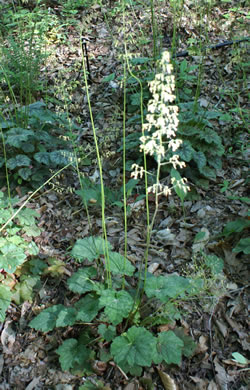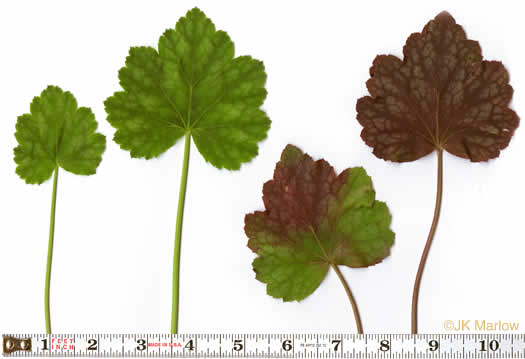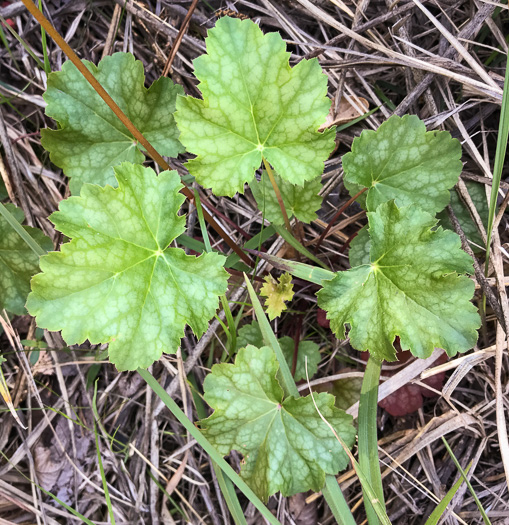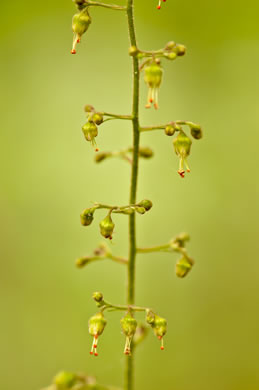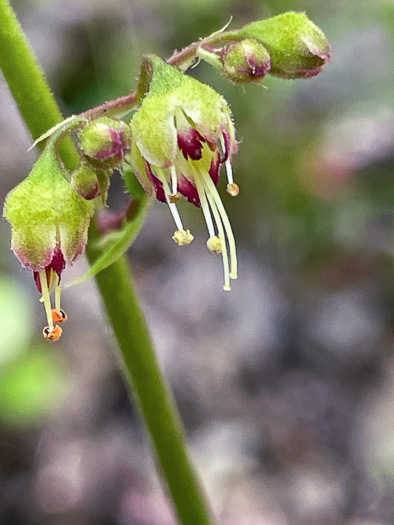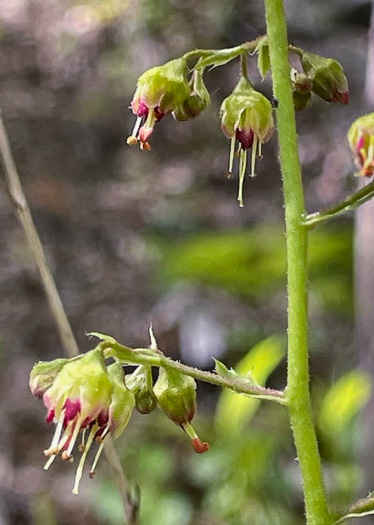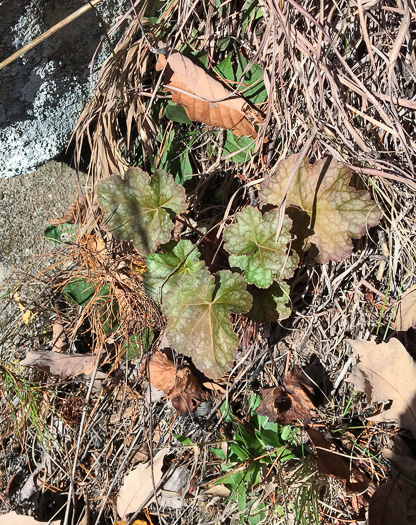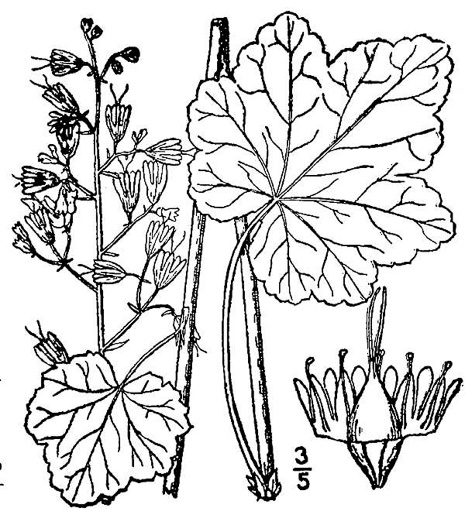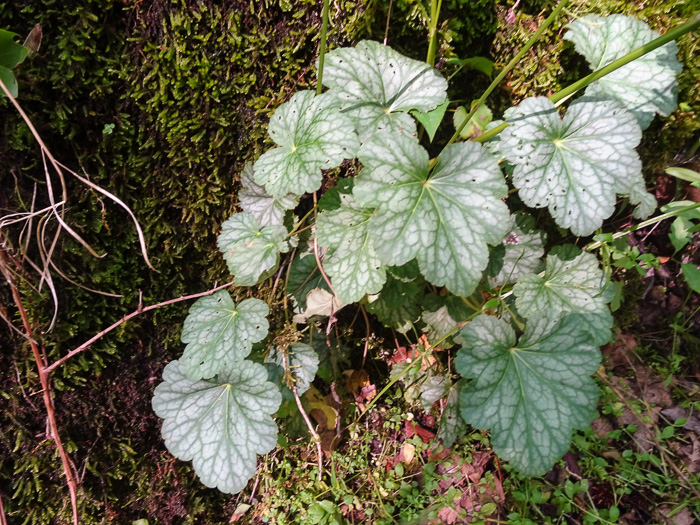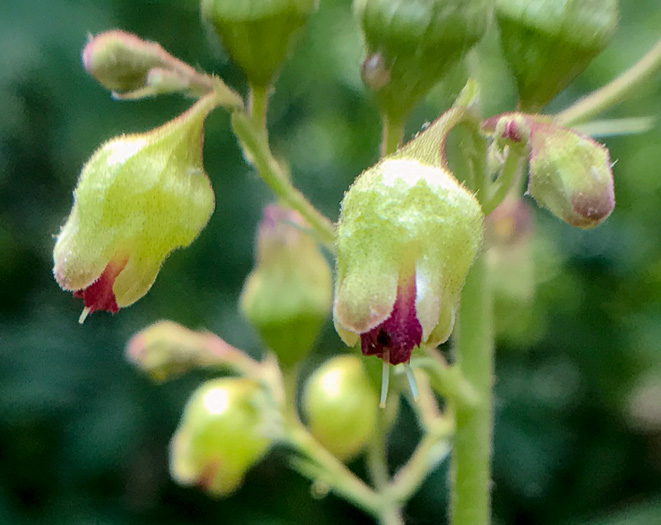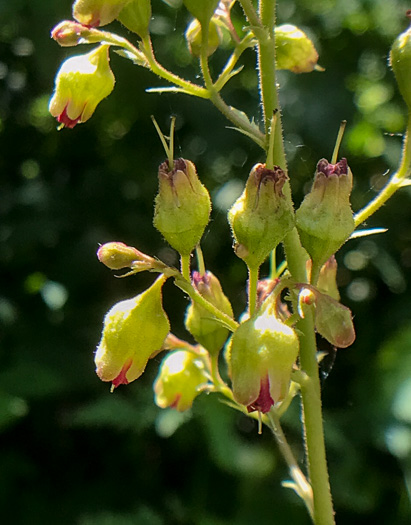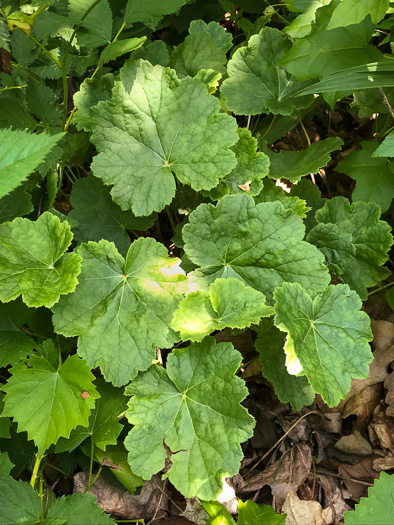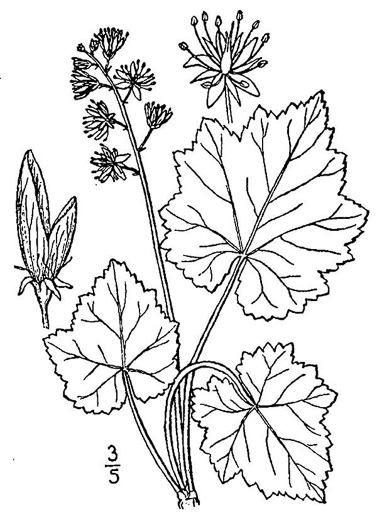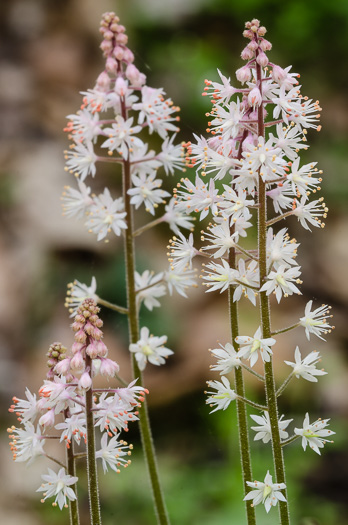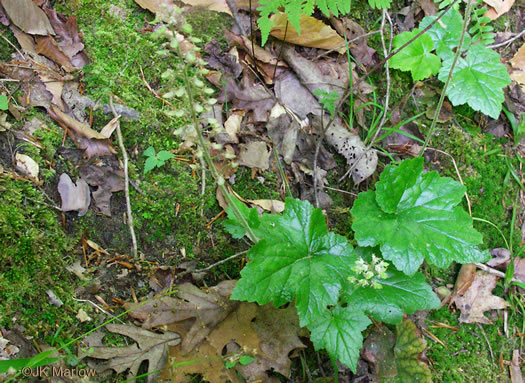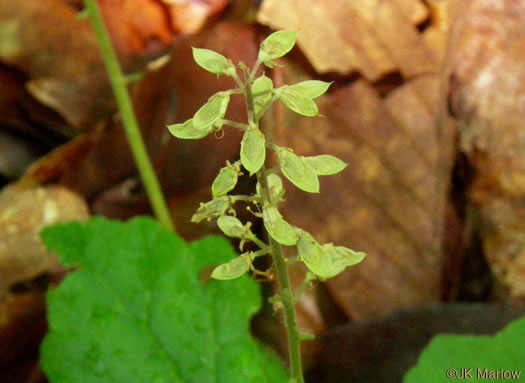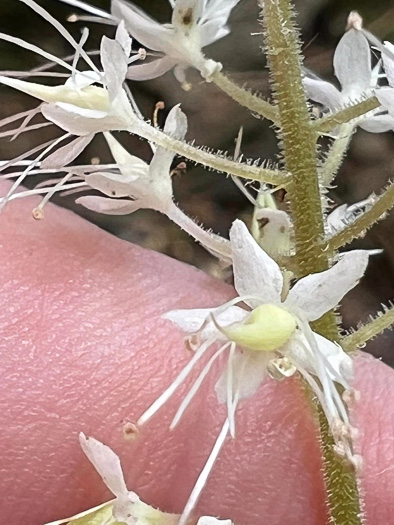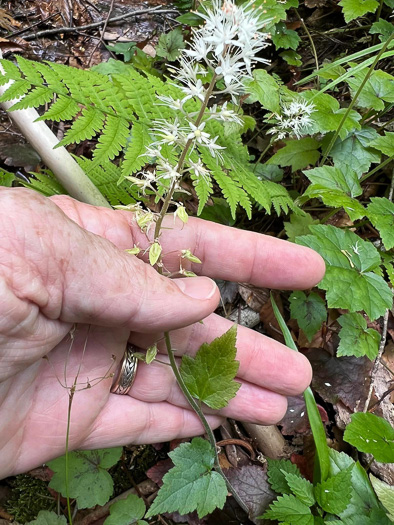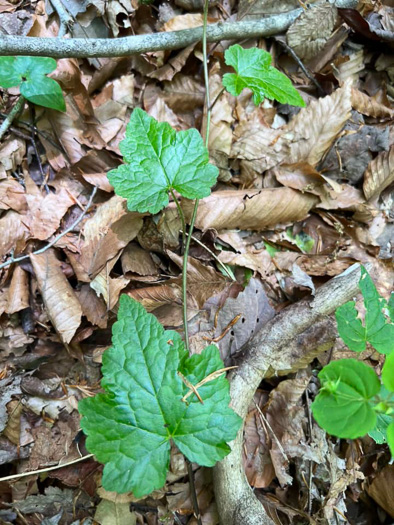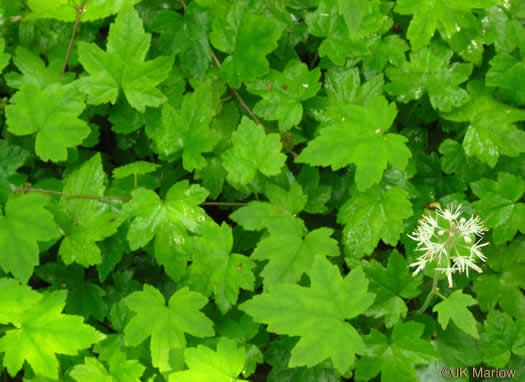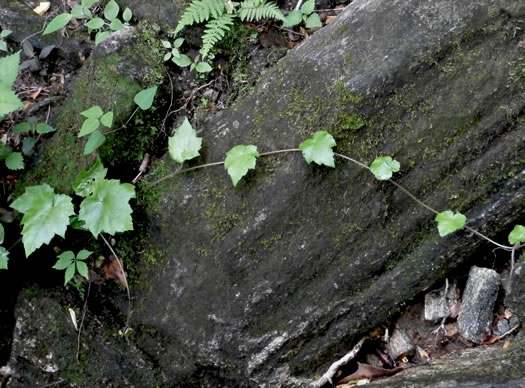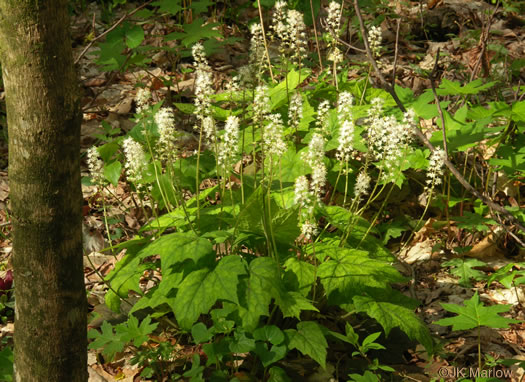Your search found 46 image(s) of Alumroot, Foamflower, and Miterwort.
To see larger pictures, click or hover over the thumbnails.
To go to the plant's detail page, click its name.
 Habitat: Mesic, rocky forests, rocky seeps, and seepage swamps, especially over mafic or calcareous rocks
Habitat: Mesic, rocky forests, rocky seeps, and seepage swamps, especially over mafic or calcareous rocks
Leaves resemble those of Tiarella, both w hairy, maple-shaped basal leaves, per Gardening with the Native Plants of Tennessee (Hunter, 2002).
Calyx tube mostly cup-shaped, the petals small and deeply fringed, per Wildflowers of Tennessee (Carman, 2005).
Leaves of Tiarella usually longer than wide and lacking variegation, per Weakley's Flora (2020).
A small pair of opposite leaves is positioned halfway up the flowering stem, per Gardening with the Native Plants of Tennessee (Hunter, 2002).
The upright calyx of each flower holds tiny black seeds until jarred out, per Gardening with the Native Plants of Tennessee (Hunter, 2002).
 Habitat: In crevices of rock outcrops, or in thin soil over boulders, a characteristic component of the flora of high elevation cliffs and summits (to at least 1920 m), not particular about the rock type, occurring on a wide range of rock types in our area, including felsic gneisses and schists, mafic gneisses, granites, quartzites, and others, probably the most acidophilic of our taxa of Heuchera
Habitat: In crevices of rock outcrops, or in thin soil over boulders, a characteristic component of the flora of high elevation cliffs and summits (to at least 1920 m), not particular about the rock type, occurring on a wide range of rock types in our area, including felsic gneisses and schists, mafic gneisses, granites, quartzites, and others, probably the most acidophilic of our taxa of Heuchera
Both the lobes and the teeth of the leaf blades are sharp-pointed, per Wildflowers of the Southern Mountains (Smith, 1998).
Heuchera usually has leaves as wide as long and with prominent variegation, per Weakley's Flora (2020).
The calyx is covered with long white hairs, per Wildflowers of Tennessee (Carman, 2005).
A cup-shaped white hairy calyx, 5 minute petals, 5 long-extending stamens, per Wildflowers of Tennessee, the Ohio Valley, and the Southern Appalachians (Horn, Cathcart, Hemmerly, & Duhl, 2005).
 Habitat: Shaded cliff bases, usually under overhangs, on grotto floors, behind waterfalls where humidity is high but not in the spray zone, in rockhouses of the Cumberland Plateau, nearly always in deeply shaded situations where little or no direct sunlight falls
Habitat: Shaded cliff bases, usually under overhangs, on grotto floors, behind waterfalls where humidity is high but not in the spray zone, in rockhouses of the Cumberland Plateau, nearly always in deeply shaded situations where little or no direct sunlight falls
The small, sharply toothed, rounded leaves have gently cut lobes, per All About South Carolina Wildflowers (Midgley, 1999).
Heuchera usually has leaves as wide as long and with prominent variegation, per Weakley's Flora (2020).
Uncommon throughout its range, per Weakley's Flora.
The tiny white flowers are in multiple branched racemes, per Wildflowers & Plant Communities of the Southern Appalachian Mountains and Piedmont (Spira, 2011).
 Habitat: Rocky forests, rock outcrops, particularly where soils are subacidic to circumneutral
Habitat: Rocky forests, rock outcrops, particularly where soils are subacidic to circumneutral
The inflorescence is a pedunculate panicle, per Vascular Flora of the Carolinas (Radford, Ahles, & Bell, 1968).
Leaves are shallowly & obscurely 5-lobed with mostly blunt teeth, per Wildflowers of the Southern Mountains (Smith, 1998).
Calyx tube turbinate to campanulate; adnate portion of hypanthium longer than free portion, per Vascular Flora of the Carolinas (Radford, Ahles, & Bell, 1968).
Heuchera usually has leaves as wide as long and with prominent variegation, per Weakley's Flora (2020).
Calyx glandular-puberulent, greenish; stamens and style exserted, per Weakley's Flora.
 Habitat: Calcareous rocky forests, rock outcrops, particularly where soils are subacidic to circumneutral
Habitat: Calcareous rocky forests, rock outcrops, particularly where soils are subacidic to circumneutral
Petals purple or pink, wider than sepals, margins fimbriate, per Flora of North America.
At the onset of anthesis, stamens exserted 3mm+ and styles 2.6mm+ beyond the calyx, per Weakley's Flora (2022).
 Habitat: Rocky forests, rock outcrops, particularly where soils are subacidic or circumneutral
Habitat: Rocky forests, rock outcrops, particularly where soils are subacidic or circumneutral
Flowers viewed from the side will look mostly green owing to the long (9-10mm) calyx lobes, per Vascular Plants of North Carolina.
The upper leaf surface is rather pubescent, per Vascular Plants of North Carolina.
Sepals about as long as petals, stamens not exserted, style conspicuously longer than petals, per Wildflowers of the Southern Mountains (Smith, 1998).
 Habitat: Shaded calcareous or basic cliffs
Habitat: Shaded calcareous or basic cliffs
 Habitat: Moist forests, cove forests, rock outcrops, well-drained bottomland forests
Habitat: Moist forests, cove forests, rock outcrops, well-drained bottomland forests
The showy raceme of white-petaled flowers has 10 exserted stamens producing a bottlebrush look, per All About South Carolina Wildflowers (Midgley, 1999).
Leaves usually ~ as long as wide, usually w obtuse to rounded lobes, terminal lobe not extended, per New Species of Foamflower (Nesom, 2022).
Fruit a two-parted capsule, per Guide to the Wildflowers of SC, 1st ed. (Porcher & Rayner, 2001).
 Habitat: Moist forests, cove forests, rock outcrops, well-drained bottomland forests
Habitat: Moist forests, cove forests, rock outcrops, well-drained bottomland forests
 Habitat: Moist forests, cove forests, rock outcrops, well-drained bottomland forests
Habitat: Moist forests, cove forests, rock outcrops, well-drained bottomland forests
5 white clawed elliptic petals and 10 conspicuously long stamens with apricot-colored anthers, per Wildflowers of the Southern Mountains (Smith, 1998).
Flowering stem usually with 1-2 leaves or leaf-like bracts, per New Species of Foamflower (Nesom, 2022).
Leaves usually with acute-acuminate lobes, terminal lobe prominently extended, per Taxonomy of Tiarella (Saxifragaceae) in the eastern USA (Nesom, 2021).
Two collections with distinctive deeply lobed leaves have been made from Graham Co., NC, per Taxonomy of Tiarella (Saxifragaceae) in the eastern USA (Nesom, 2021).
Both T. austrina and T. stolonifera have herbaceous, leafy stolons, per New Species of Foamflower (Nesom, 2022).
 Habitat: Moist forests, cove forests, rock outcrops, well-drained bottomland forests
Habitat: Moist forests, cove forests, rock outcrops, well-drained bottomland forests
Plants without stolons. Leaves usually about as long as wide, terminal lobe not extended, per New Species of Foamflower (Nesom, 2022).
5 petals, 10 long stamens, borne on a terminal raceme to 6" long on a leafless stalk, per Wildflowers of Tennessee, the Ohio Valley, and the Southern Appalachians (Horn, Cathcart, Hemmerly, & Duhl, 2005).
Flowering stem without leaves or leaf-like bracts, per New Species of Foamflower (Nesom, 2022).

